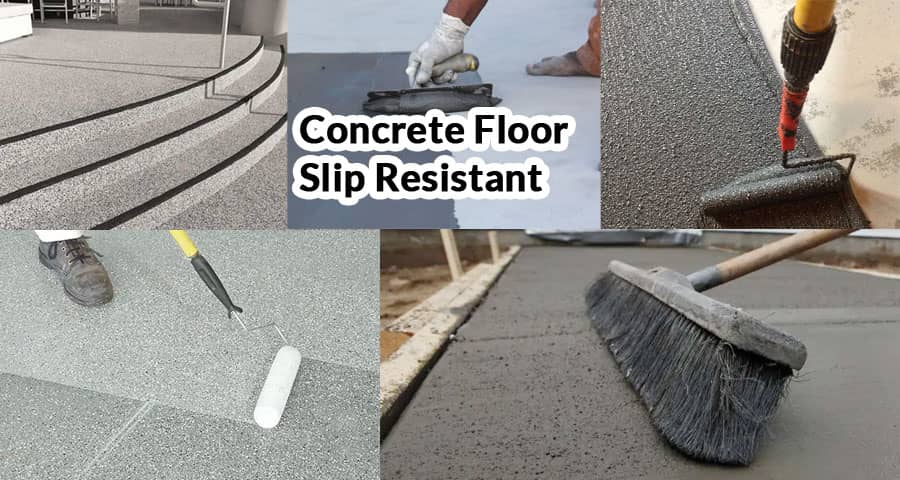How to Enhance the Slip Resistance of Your Concrete Floors

Concrete floors are a staple in many industrial and commercial settings due to their durability and affordability. However, one common issue with concrete floors is their tendency to become slippery, especially when wet. Slippery floors pose a significant safety hazard, increasing the risk of slips, trips, and falls, which can lead to injuries and liabilities for businesses. Therefore, it's crucial to take proactive measures to enhance the slip resistance of concrete floors to ensure a safe environment for employees, customers, and visitors.
Understanding the Slippery Nature of Concrete Floors
Before delving into solutions, it's essential to understand why concrete floors can become slippery. Concrete surfaces are often smooth, and when moisture, oil, grease, or other contaminants are present, they create a slippery film on the surface, compromising traction. Additionally, wear and tear over time can further smooth out the surface, exacerbating the slipperiness.
Implementing Effective Slip Resistance Solutions
- Surface Texture Enhancement: Surface texture enhancement is one of the most effective methods to improve slip resistance on concrete floors. This involves altering the surface of the concrete to create a rougher texture that enhances traction. Techniques such as shot blasting, diamond grinding, or acid etching can be employed to achieve the desired texture. By increasing surface roughness, the contact area between footwear and the floor is maximized, reducing the risk of slipping.
- Applying Anti-Slip Coatings: Another effective approach is to apply anti-slip coatings specifically designed for concrete surfaces. These coatings contain abrasive materials such as silica sand or aluminum oxide, which create a rough surface texture, enhancing traction. Anti-slip coatings are available in various formulations, including epoxy, polyurethane, and acrylic, providing flexibility in terms of durability and aesthetics.
- Regular Cleaning and Maintenance: Proper cleaning and maintenance play a critical role in preserving the slip resistance of concrete floors. Regular cleaning removes dirt, oil, and other contaminants that can contribute to slipperiness. Additionally, implementing a routine maintenance program to address wear and tear, cracks, and surface defects can prevent deterioration and maintain the effectiveness of slip resistance measures.
- Implementing Floor Safety Signage: In addition to physical interventions, floor safety signage can help raise awareness and remind individuals to exercise caution when walking on concrete floors, especially in areas prone to moisture or spills. Clear and visible signage indicating slippery surfaces or wet floors can prompt people to take extra precautions, reducing the likelihood of accidents.
Additional Tips for Enhancing Slip Resistance
- Installing Drainage Systems: In areas where water accumulation is a common issue, such as loading docks or outdoor spaces, installing drainage systems can effectively reduce the risk of slippery conditions. Properly designed drainage systems help divert water away from the surface, preventing it from pooling and creating hazards. This proactive approach minimizes the need for constant maintenance and reduces the likelihood of slips caused by standing water.
- Utilizing Non-Slip Floor Mats: Non-slip floor mats are another practical solution for enhancing slip resistance on concrete floors, particularly in high-traffic or spill-prone areas. These mats feature textured surfaces or rubberized materials that provide additional traction, even in wet or oily conditions. Placing non-slip mats strategically near entryways, workstations, or machinery can significantly improve safety and reduce the risk of accidents.
- Conducting Regular Safety Audits: Regular safety audits are essential for identifying potential hazards and ensuring that slip resistance measures remain effective over time. Schedule periodic inspections of concrete floors to assess their condition, including surface texture, coatings, and cleanliness. Address any issues promptly, such as worn-out coatings or damaged areas, to maintain optimal slip resistance and mitigate safety risks.
The Importance of Professional Expertise
While implementing these strategies can enhance slip resistance, it's essential to seek professional expertise to ensure optimal results. Consulting with flooring specialists or safety professionals can provide valuable insights into the most suitable solutions for your specific environment. These experts can assess the unique challenges of your facility and recommend tailored approaches to maximize safety and compliance.
Conclusion
In conclusion, ensuring slip resistance on concrete floors is paramount for maintaining a safe and hazard-free environment in industrial and commercial settings. By implementing effective solutions such as surface texture enhancement, anti-slip coatings, regular cleaning and maintenance, and floor safety signage, businesses can mitigate the risk of slips and falls, protecting the well-being of employees, customers, and visitors.
Remember, prioritizing safety not only fosters a positive work environment but also minimizes potential liabilities associated with accidents and injuries.
